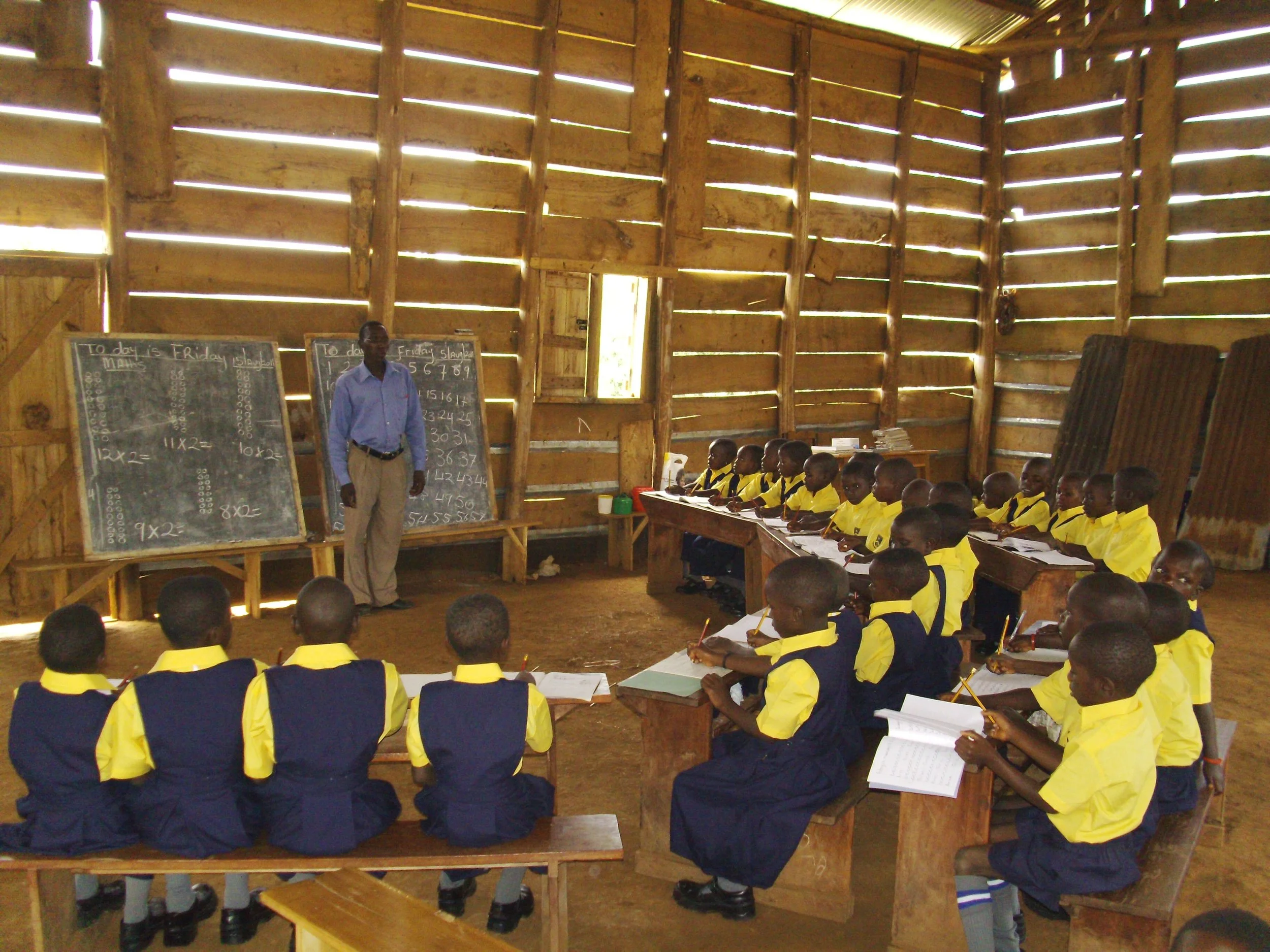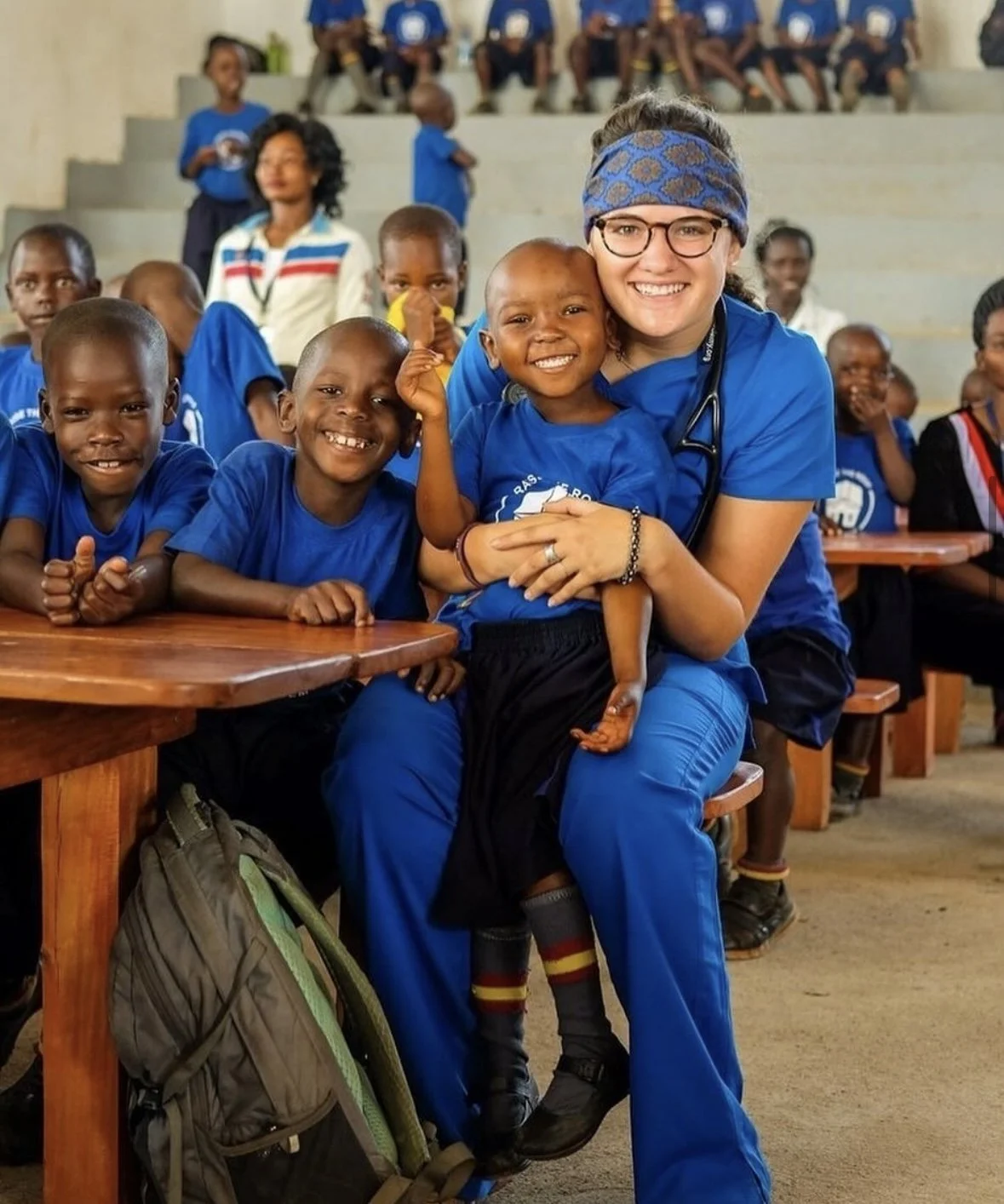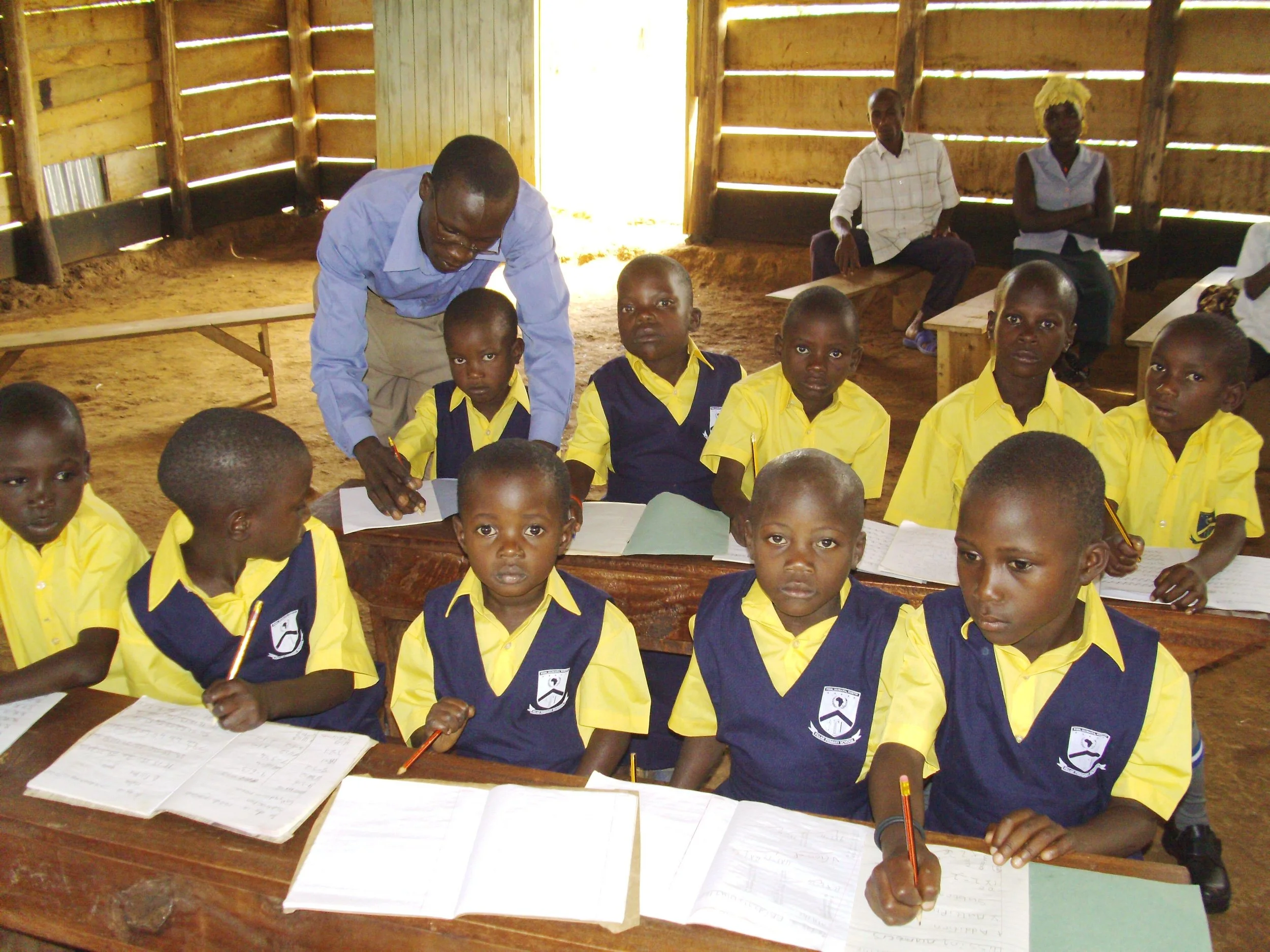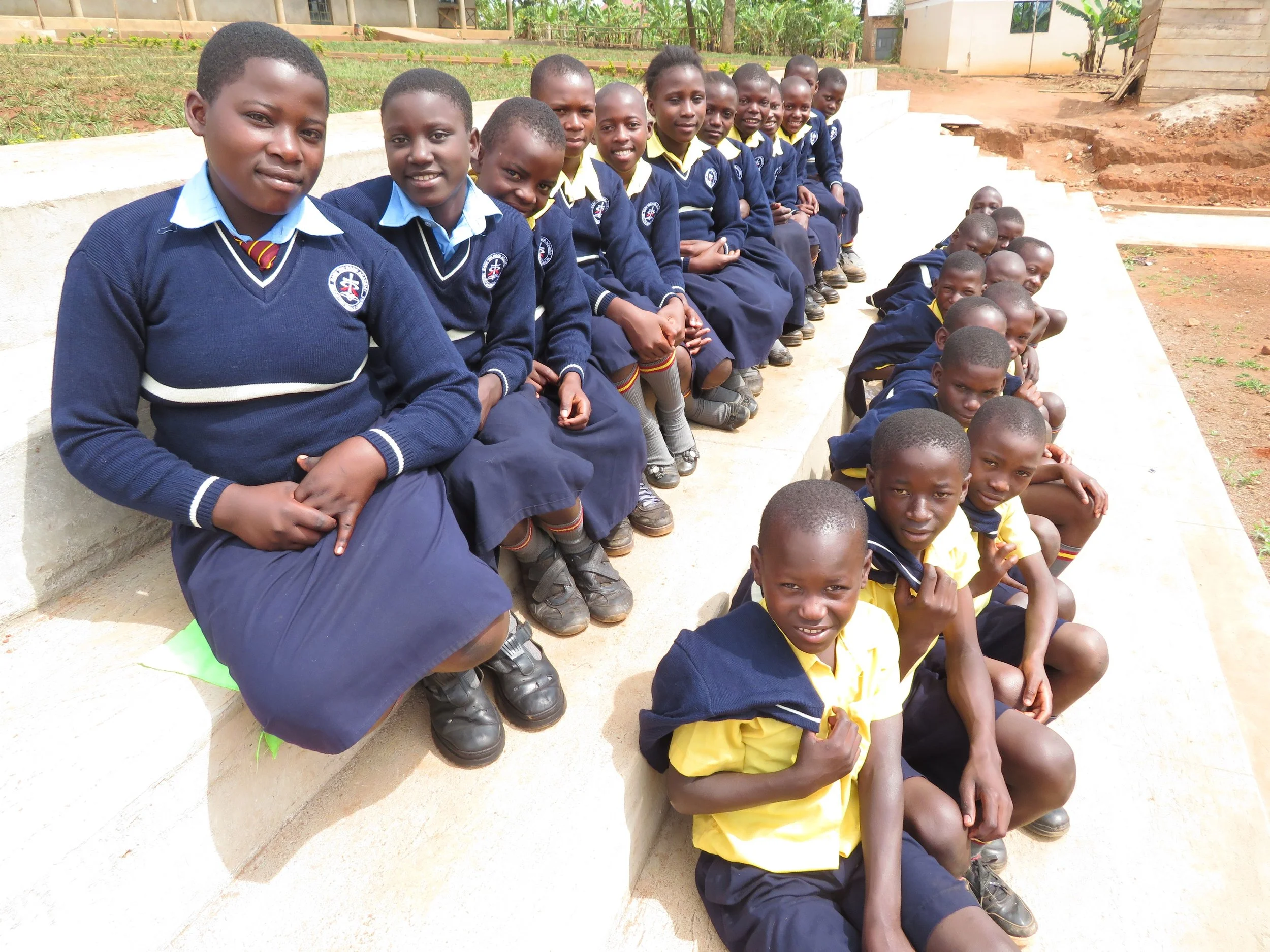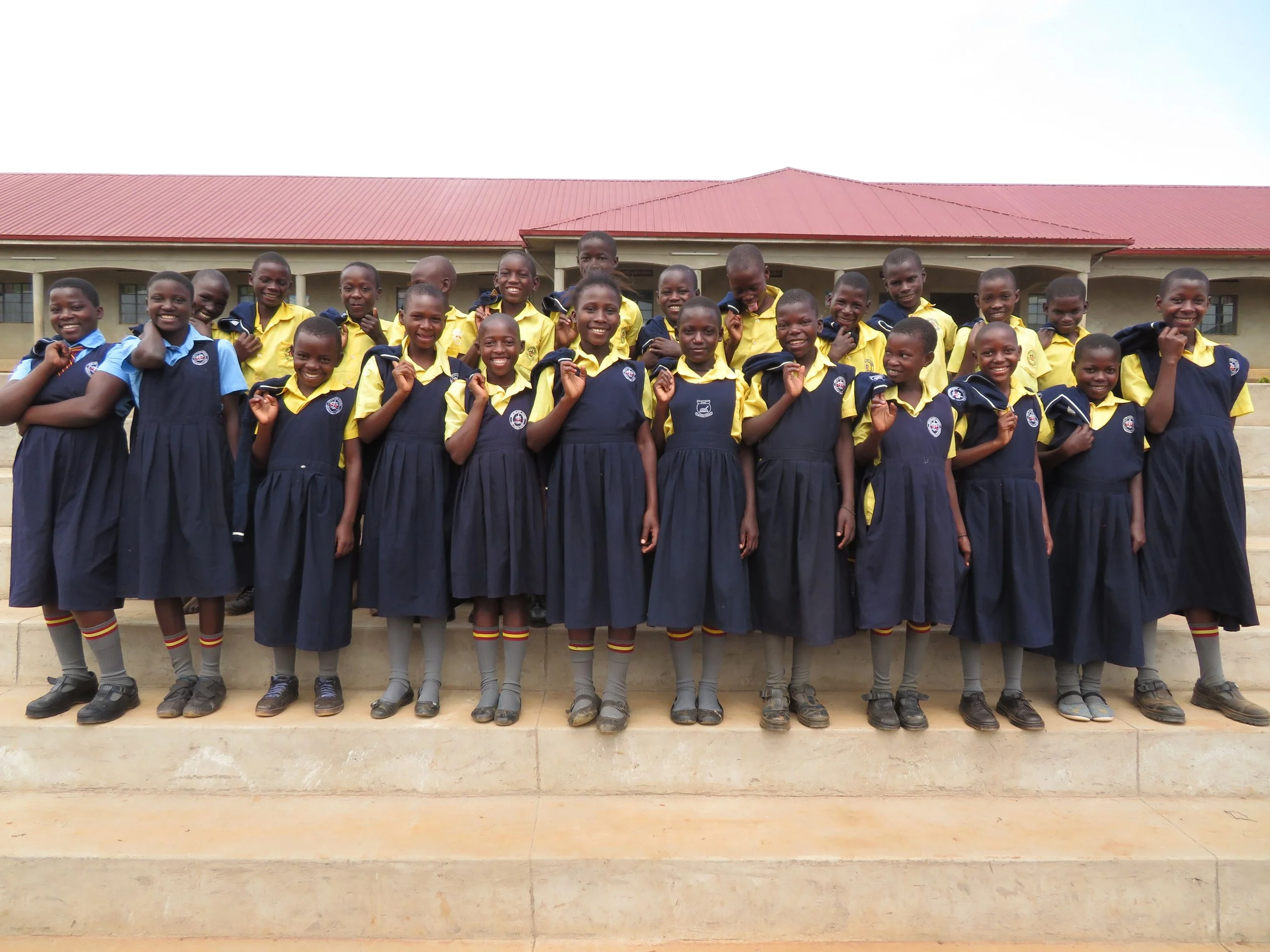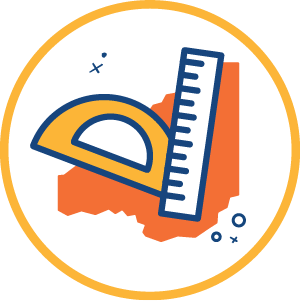
14 Years
Dear friends,
It all began with the words — build a school that will introduce these children to a world beyond this little village. A Children’s Choir that had been formed to sing for us as the guests had just finished putting on the most electrifying performance of songs and dances, we had ever seen. We were wowed. In their music, dancing and drumming, we found a deep sense of connection. The music prepared our hearts to hear the story of the people of the village of Bwasandeku.
Eva was an elderly matriarch of this little village church who was too frail to walk and only sat on a mat and watched everyone closely. As soon as the children finished their singing and dancing, she forced herself on her feeble legs and said the words that let us know God was calling us to the people of this village. On that July day of 2008, Raise the Roof Academy was born in our hearts. Almost three years later, the school opened with 30 children and 2 teachers on March 7, 2011.
We just celebrated our 14th anniversary, so I invite you to join me in celebrating 14 achievements shared by our staff.
1
Primary 7, Senior 4, and Senior 6 Accreditation
We rejoice that we have received accreditation from the Uganda Ministry of Education (National Examination Board) for each level of our schools. This is a big deal for a young school, especially since some schools have been in operation for 30 years and still, they have not qualified yet to get their Uganda National Examinations Board accreditations. This has made RTRA schools very competitive academically.
2
Changing Mindsets About Families Living in Poverty
Earlier on, we learned that the bar of expectations for families living in extreme poverty was very low. The families were deprived of access to necessary resources such as health and transportation. The few schools in the region were very dilapidated and were taught by untrained teachers. It was very normal for a 15-year-old girl to get married with the blessing of her parents and normally to an older guy. On rainy days children went to work in the gardens and did not come to school. Today, all of this is quickly changing and we see new life.
3
Raising and Serving Alongside Native Leaders from among our families
It is very normal for organizations that work among the poor to hire staff, build offices, and set up systems and processes that require the people they serve to line up at their offices to receive their services. From day one, we wanted to be guided by the people of the community. Our first two teachers were from the community. We are uniquely blessed to have a model that commits us to work alongside leaders from among the households we serve. These leaders know the culture, have the trust of the people, and have lived in their villages we serve for generations and will be there long after we are gone. Each leader oversees 8-12 households. As of March 2025, we have grown our leadership team to 98 active community leaders. Another 54 leaders have retired over the past 14 years but still help as their health allows them. The secret behind RTRA’’s successes is these Community Leaders.
98 leaders
within our leadership team as of march 2025
4
From the beginning, we chose to work alongside the families we serve to rethink poverty and cultivate habits that are rooted in empowerment and lead to development. In the last 14 years we have seen households who struggled contributing even 2 dollars in a period of 3 months towards the children’s education be able to do so. Today, 70% of RTRA households are able to contribute $7 towards resources for the education of their child. This is a great achievement. Many people have incomes generated from animals they receive from the animals we give them; others are able to work in their fields as the children are in school.
Kick Starting Household Incomes
5
Shortening the distance between home and school
In the first 8 years of RTRA, many children would walk for up to 6 miles one-way to school. Walking this long-distance rain or shine is very hard on a child’s ability to concentrate in class. Some kids were falling asleep in class, others would often miss school. In the last 14 years, we have worked hard to shorten the distance by building homes around the campus. Students who live in the homes have 3 meals each day, have access to water, the school clinic, support from teachers, and loving house parents. Today, of the 1,780 students in RTRA, 564 children live on campus. Many other students are picked up each morning by our school van.
OUT OF 1,780 RTRA STUDENTS, 564 children live on campus.
6
Malaria and many other illnesses have persisted in the villages where our children live. Our clinic provides year-round healthcare to our students, staff, and the community. Apart from building and resourcing a clinic, we have also recruited and trained from our parents Community Health Workers who provide primary healthcare in the most remote villages to our students and families who are not able to walk to the clinic at the school. Every week, our health team sees 350 – 500 patients. Our professional and volunteer health team sees all sorts of illnesses and makes house calls which is saving lives and improving health among our families. Every year, we also host the Health Week during the Summer Mission Trip where thousands of people are seen by doctors, get their dental work done, receive prescriptions, eyeglasses, and some receive minor surgeries. This is why we say, health is the greatest asset the poor have.
Saving Lives and Improving Health
7
Clean Water Saves Lives
Malaria and many other illnesses have persisted in the villages where our children live. Our clinic provides year-round healthcare to our students, staff, and the community. Apart from building and resourcing a clinic, we have also recruited and trained from our parents Community Health Workers who provide primary healthcare in the most remote villages to our students and families who are not able to walk to the clinic at the school. Every week, our health team sees 350 – 500 patients. Our professional and volunteer health team sees all sorts of illnesses and makes house calls which is saving lives and improving health among our families. Every year, we also host the Health Week during the Summer Mission Trip where thousands of people are seen by doctors, get their dental work done, receive prescriptions, eyeglasses, and some receive minor surgeries. This is why we say, health is the greatest asset the poor have.
8
Recruiting, Resourcing, and Retaining a Competitive Staff
Recruiting, resourcing, and retaining a competitive staff equal to our mission and vision, is the main reason RTRA is impacting children and households who were once written-off. We are called to the poorest families in Uganda. It is a great achievement to have well-trained and passionate staff who go above and beyond to advocate for the children and families in our orbit.
9
Competitive Athletics Program
We are proud to have a growing athletics program. We have volleyball, netball, soccer, track and field, and we would like to add basketball, tennis, lacrosse, baseball, table tennis, and more. In soccer and netball, we have registered many achievements. Our girls’ and boys’ soccer teams (12 teams) have done well at the district, region, and national level. We look forward to growing this program.
10
Performing Arts Department
We are so proud of our Performing Arts Department. The RTRA Choir is one of our flagship programs in this department. The choir has over 120 children who went through the audition process. Through the Performing Arts Program, students get to discover, develop, and deploy their talents. We have appreciated the year-around live recordings that showcase our children dancing and singing. Today, we are in the process of preparing for the RTRA Choir tour to the USA. Watch this space rtra.org/choir
11
Making Disciples of Jesus Christ First
Discipleship is a life-long journey of learning from Jesus and becoming more and more like him. Every day our children begin with chapel time and those who stay on campus meet in their homes to end their day in worship with their house parents. Our children come to us after enduring all sorts of suffering. They come to us with questions about faith and God’s love. We believe offering them space and opportunities to ground them in scripture, prayer, and worship is a means to experience the grace and love of God. Grounding our children in the teachings of Jesus has given our children a firm faith, hope, and character in how they relate with each other and their neighbors.
12
Empowering Schools in the Region
We have sought not to hoard what we have, and are committed to sharing with other area schools. Every year, we host teacher training workshops for our teachers and area teachers. This is extended to them at no cost especially since most of them cannot afford it. Each year, we train over 800 area teachers. During our summer mission week, we host children from area schools to come for camp and to receive medical care. RTRA is a founding member of the Association of Turnaround Schools which is a consortium to uplift all area schools by developing the teacher, sharing best practices, and sharing resources.
13
Construction of Learning and Living Spaces
Since 2013, brick by brick we have constructed classrooms, student housing, water systems, kitchens, bathrooms, clinic, perimeter walls, fences, and acquired land for school expansion and farming. This is a great achievement of the last 14 years and we are not done. Through the build campaigns we are able to build and serve more children.
14
Retention of Children and Staff
On March 7, 2011, RTRA opened its doors with 30 children and 2 teachers. 14 years later, on March 7, 2025, we are educating 1,780 children from kindergarten to university. In these 14 years, less than 6% of our children have dropped out of our program whereas the national average sits at 38% and in schools equal in the villages, this number rises to over 50%. Today, our staff team is over 140 individuals. From day one, we chose to challenge the status quo concerning rural education. In 2011, it was normal for children to spend their days working in the fields. 14-years later it is admirable to be in school. In 14 years, we have concluded that the manner in which we educate our students is fundamental to the progress of families, communities, the nation and the continent of Africa.
Over 50%
of children in african villages drop out of their schools
less than 6%
of our children have dropped out of our program
38%
of children in the national average drop out of school


